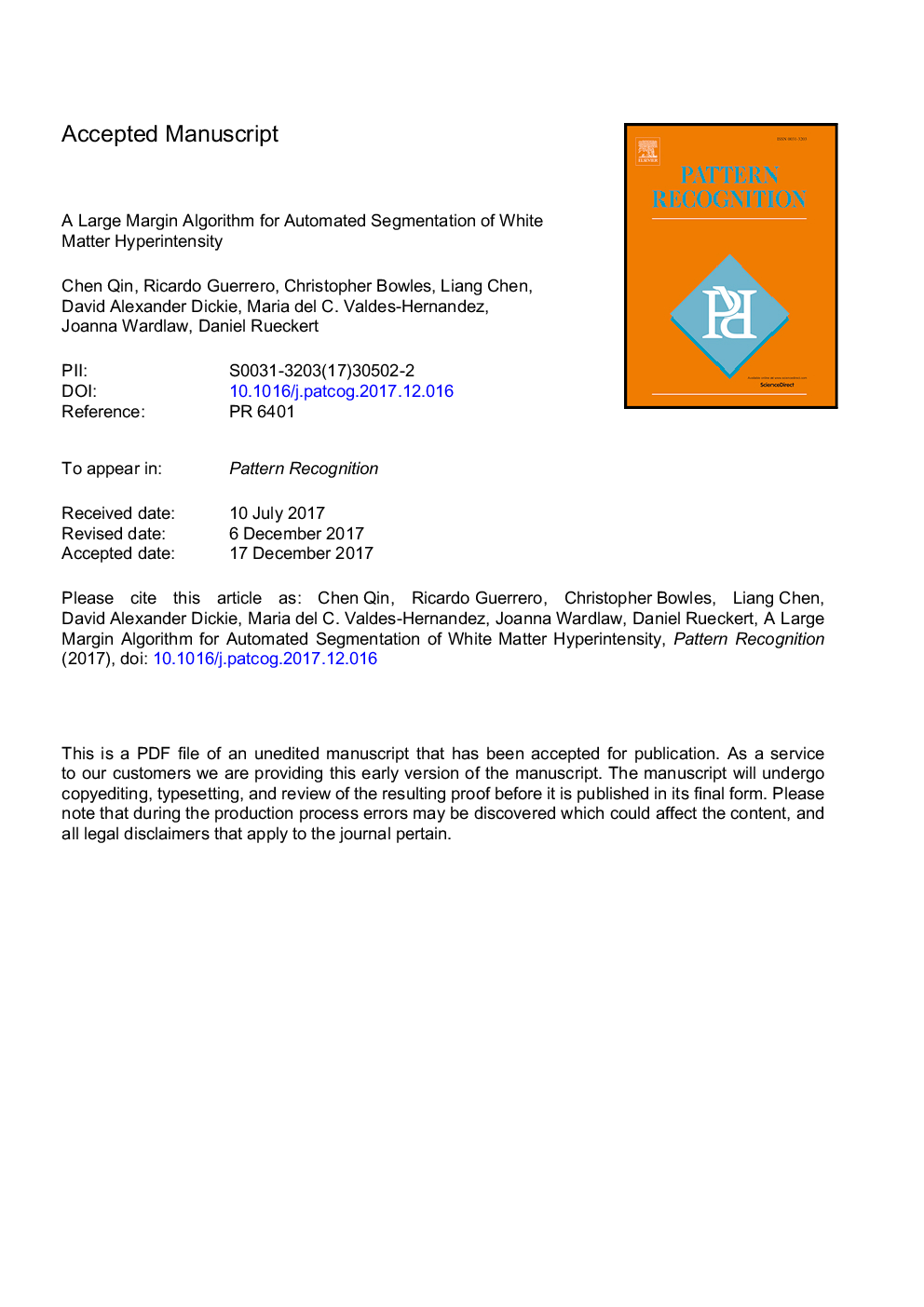| Article ID | Journal | Published Year | Pages | File Type |
|---|---|---|---|---|
| 6939315 | Pattern Recognition | 2018 | 35 Pages |
Abstract
Precise detection and quantification of white matter hyperintensity (WMH) is of great interest in studies of neurological and vascular disorders. In this work, we propose a novel method for automatic WMH segmentation with both supervised and semi-supervised large margin algorithms provided by the framework. The proposed algorithms optimize a kernel based max-margin objective function which aims to maximize the margin between inliers and outliers. We show that the semi-supervised learning problem can be formulated to learn a classifier and label assignment simultaneously, which can be solved efficiently by an iterative algorithm. The model is learned first via the supervised approach and then fine-tuned on a target image by using the semi-supervised algorithm. We evaluate our method on 88 brain fluid-attenuated inversion recovery (FLAIR) magnetic resonance (MR) images from subjects with vascular disease. Quantitative evaluation of the proposed approach shows that it outperforms other well known methods for WMH segmentation.
Keywords
Related Topics
Physical Sciences and Engineering
Computer Science
Computer Vision and Pattern Recognition
Authors
Chen Qin, Ricardo Guerrero, Christopher Bowles, Liang Chen, David Alexander Dickie, Maria del C. Valdes-Hernandez, Joanna Wardlaw, Daniel Rueckert,
